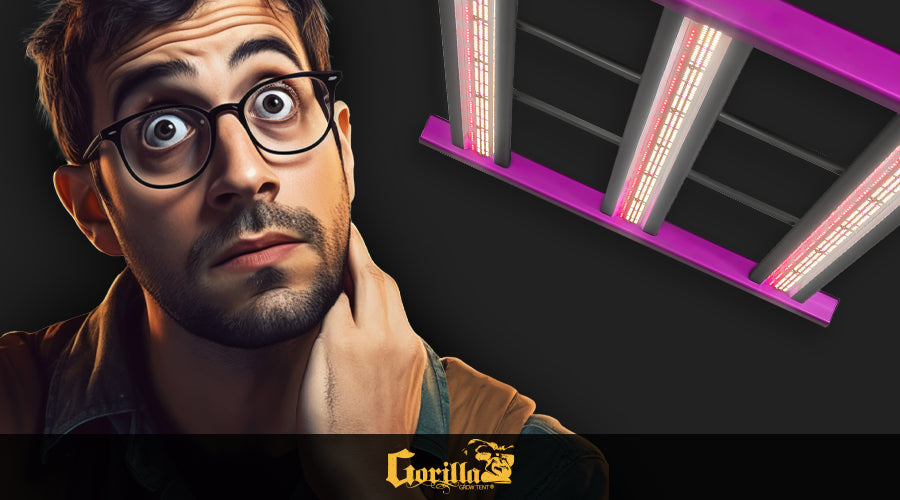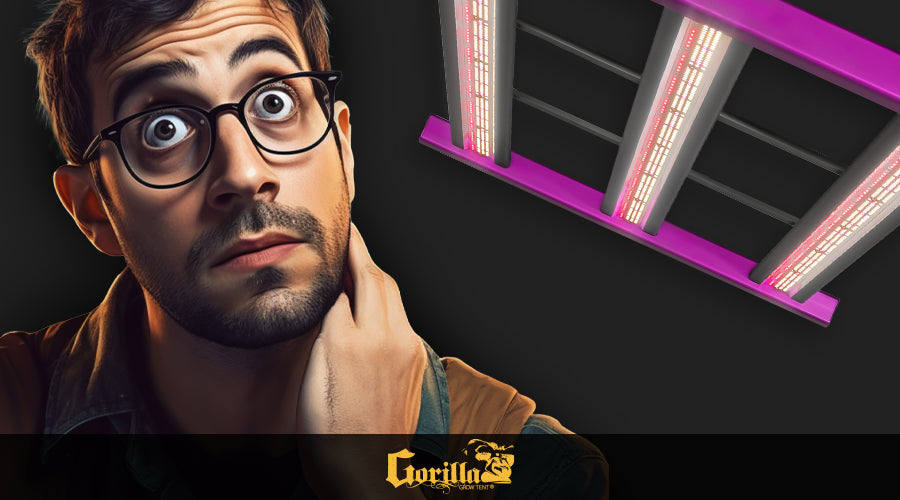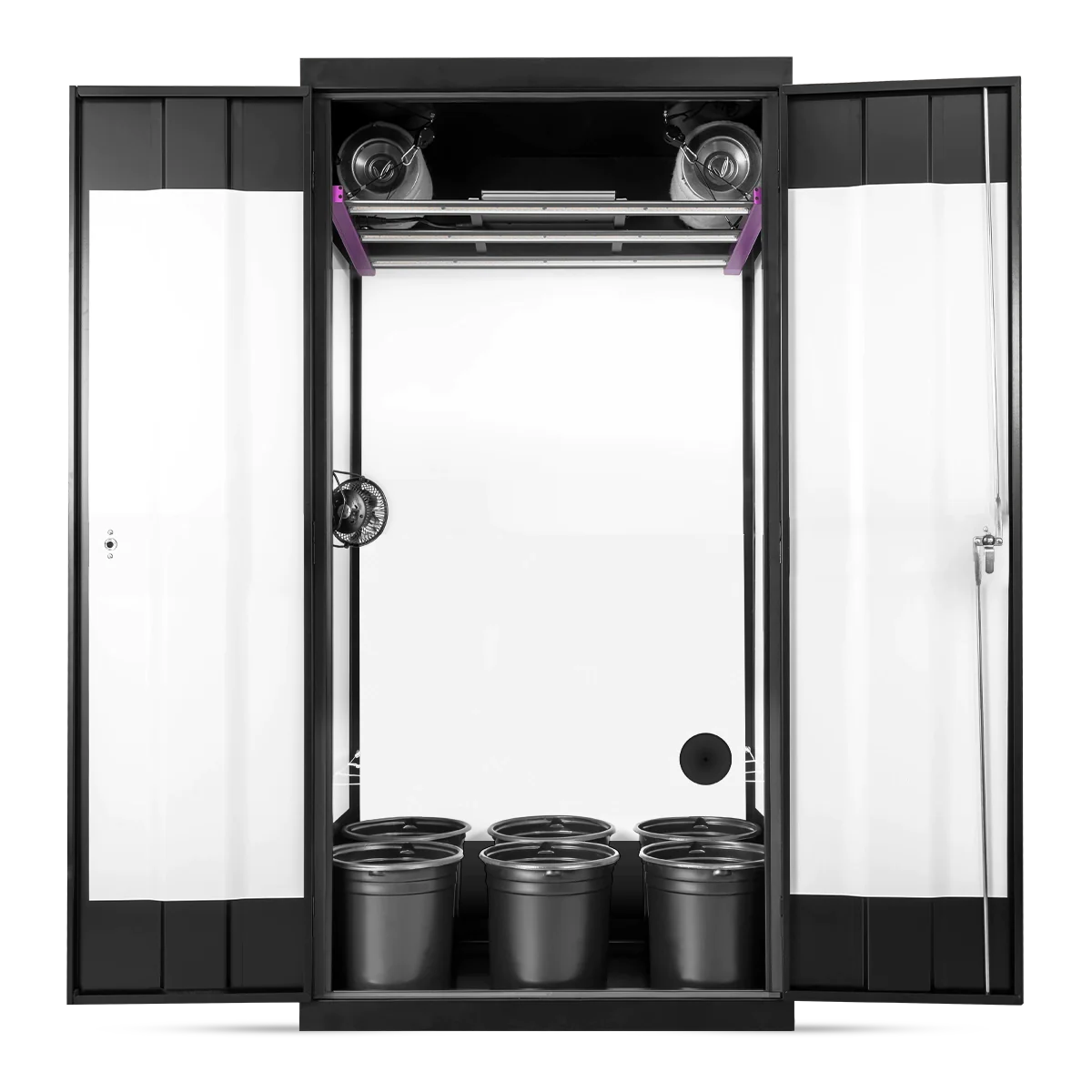
From Seed to Sky: How to Hang Grow Lights Like a Pro
Grow lights are a vital tool for any indoor gardener, providing your plants with the essential sunlight they need to thrive. But figuring out how to hang them can be tricky.
This guide will walk you through everything you need to know, from choosing the right lights to hanging them safely and ensuring optimal growth for your beloved plants.

Choosing the Right Grow Lights
Grow lights are a vital tool for any indoor gardener, providing your plants with the essential sunlight they need to thrive. But with so many options available, choosing the right grow lights can feel overwhelming.
Now, we will help you navigate the world of grow lights and select the perfect ones for your specific needs.
Factors to Consider
Plant Type: Different plants have different light requirements. Some plants, like leafy greens, thrive under blue and red light, while flowering plants benefit from additional red light. Do some research on the specific light needs of the plants you plan to grow.
Light Intensity: The intensity of your lights should match the growth stage of your plants. Seedlings require less intense light than mature plants. Many grow lights come with dimmers or timers that allow you to adjust the intensity as needed.
Coverage Area: Ensure your lights cover the entire area where your plants will be growing. Measure the length and width of your growing space and multiply the two numbers together. Then, consult the specifications of the grow lights you're considering to see if they cover that area.
Energy Efficiency: LED grow lights are the most energy-efficient option. They consume less energy than other types of grow lights and last longer, making them a cost-effective choice in the long run.
Budget: Grow lights can range in price from very affordable to quite expensive. Consider your budget and how many lights you need before making a purchase.
Additional Features: Some grow lights come with additional features, such as timers, reflectors, and built-in fans. These features can be helpful, but they can also increase the cost of the lights.
Types of Grow Lights
LED Grow Lights: These are the most popular type of grow light and for good reason. They are energy-efficient, have a long lifespan, and produce a full spectrum of light that is ideal for most plants. They are also relatively cool-running, making them a good choice for small spaces.
Fluorescent Grow Lights: These are a more traditional option and are still a good choice for many plants. They are less expensive than LED lights, but they are not as energy-efficient and do not last as long. Fluorescent lights also emit more heat, so they may not be suitable for small spaces.
Incandescent Grow Lights: These are the least energy-efficient type of grow light and are not recommended for most indoor gardening applications. They generate a lot of heat, which can damage plants, and they do not produce a full spectrum of light.
HID Grow Lights: These are high-intensity discharge lights that are typically used for commercial applications. They are very powerful and produce a lot of light, but they are also very expensive and require special equipment to operate.
How to Hang Grow Lights?
There are several methods to hang grow lights, depending on the type of setup you have and the flexibility you need for adjusting the height of the lights as your plants grow.
Here are some common hanging methods:
Ratchet Pulleys:
These are convenient for adjustable hanging. Ratchet pulleys allow you to easily raise or lower the lights as needed without having to reposition knots or hooks.
Chains or Rope with Hooks:
This method provides flexibility in adjusting the height of the lights. You can use hooks attached to the ceiling or a frame and adjust the length of the rope or chain to change the light's height.
Adjustable Hangers:
Some grow lights come with built-in adjustable hangers. These often have a mechanism that allows you to change the height of the light fixture easily.
Ceiling Hooks or Mounts:
Installing hooks or mounts on the ceiling or a sturdy structure can provide a fixed point from which to hang your lights. This method is good for stability but may not offer as much adjustability.
DIY Hanging Systems:
You can create your own hanging systems using various materials like PVC pipes, wooden frames, or even repurposed items to suspend the lights according to your specific setup.
Tricks to Hanging The Grow Lights
Light Height and Plant Growth: Adjusting the height of the grow lights is crucial for optimizing plant growth. During the seedling and early growth stages, lights should be closer to provide intense light. As plants grow, raise the lights to maintain an optimal distance and prevent burning or stunting growth.
Light Movers: These are devices that move the light fixtures along a rail system, providing even light distribution over a larger area. Light movers can be beneficial in larger grow spaces, ensuring all plants receive adequate light.
Pulley Systems: Using pulley systems allows for easy adjustment of light height. It's a popular method because it enables you to raise or lower the lights without much effort, making it convenient to adapt to your plants' growth.
Light Hanging Accessories: Various accessories are available to facilitate hanging grow lights, such as carabiners, S-hooks, or adjustable straps. These items can make the hanging process simpler and more versatile.
Reflective Surfaces: Consider reflective materials on walls or surfaces around your plants. This can maximize light utilization by bouncing it back onto the plants, especially from the sides, ensuring better coverage and potentially reducing the number of lights needed.
Light Hanging Stability: Stability is essential to prevent accidents or damage to your plants. Double-check the hanging mechanisms regularly to ensure they're secure and won't unexpectedly fall or shift.
Light Coverage and Layout: Assess the layout of your growing area to ensure that all plants receive adequate light coverage. Some light fixtures have a specific angle or spread of light, so plan their placement accordingly to avoid shadowed areas.
Safety Considerations: Ensure the hanging method you choose is sturdy and can support the weight of the lights. Always follow safety guidelines, especially if dealing with electricity and hanging fixtures from ceilings or structures.
Maximizing Plant Growth
Once your lights are hung, you need to optimize them for maximum plant growth. Here are some helpful tips:
Light Spacing: If using multiple grow lights, distribute them evenly to ensure uniform coverage across all plants. This helps prevent areas of over or underexposure to light.
Light Spectrum and Intensity: Understand the light needs of your plants. Different growth stages require different light spectrums (like blue for vegetative growth and red for flowering) and intensities. Some lights offer adjustable spectrums or have specific settings for different growth phases.
Hanging Distance Guidelines: While the ideal hanging distance varies based on the light type and plant species, a general rule of thumb for LED grow lights is:
Seedlings: 24-36 inches
Vegetative stage: 18-24 inches
Flowering stage: 12-18 inches
However, always refer to the manufacturer's guidelines for specific recommendations.
Temperature Control: Grow lights emit heat, which can affect plant growth and health. Ensure proper ventilation and consider using cooling systems or fans to manage the temperature around the plants.
Light Timers: Utilize timers to maintain a consistent light cycle for your plants. Mimicking natural day and night cycles is crucial for their growth and flowering stages. Typically, plants require around 12-18 hours of light per day during the vegetative stage and 12 hours during the flowering stage.
Energy Efficiency: Consider energy-efficient options when choosing grow lights. LED grow lights, for instance, are known for their energy efficiency and longevity compared to traditional lighting options like HPS (High-Pressure Sodium) or fluorescent bulbs.
Light Height Adjustments: Check and adjust the height of your lights regularly as your plants grow. Observing the plants' response to the light's intensity and adjusting accordingly ensures optimal growth.


